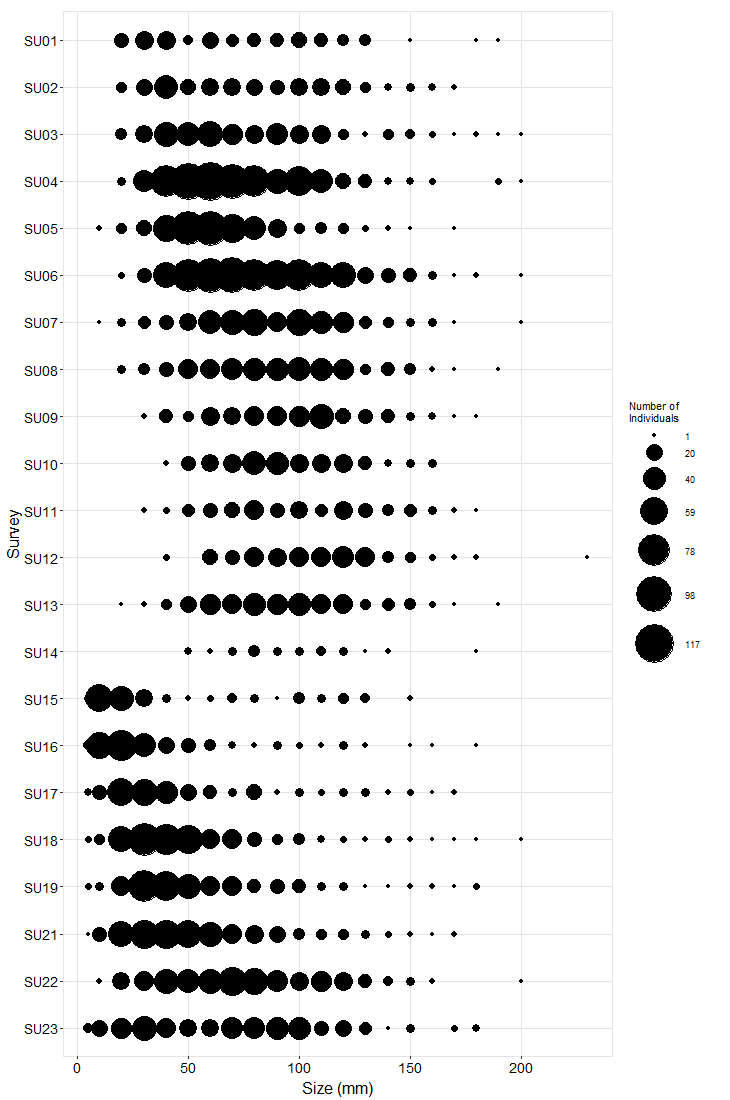
Long-Term Monitoring Trend Graphs
Barnacle cover in the barnacle plots at Fogarty Creek was generally above 80%, which is surprising given that this area is a popular location for seals to haul out. Balanus glandula were much more abundant than Chthamalus dalli/fissus in these plots. The mussel bed at Fogarty Creek is extensive and quite deep, which likely contributed to high, stable cover within Mytilus plots over time. Fucus cover in rockweed plots fluctuated somewhat over time and exhibited a general declining trend. Pelvetiopsis cover in its target plots plummeted after the initial survey and remained low in all successive years. In Neorhodomela plots, this red alga appears to be getting displaced by the surfgrass, Phyllospadix. Surfgrass also did well in its target transects, where cover was high throughout the duration of the study.
Fluctuations in ochre star counts prior to 2014 were likely due to movement of stars into and out of the plots from offshore habitat because size class data show changes in numbers of adult-sized stars. By contrast, the recovery trend following the 2014 decline due to Sea Star Wasting Syndrome was fueled entirely by new recruitment as evidenced by large numbers of stars < 50 mm. As of 2024, counts were within the historical normal range, but size structure was still skewed toward smaller individuals. However, the ochre star population at Fogarty Creek is on track to fully recover within a few years.
In order to standardize species resolution across all MARINe groups and over time, some species (typically rare) were lumped for graphical presentation of Long-Term monitoring data. See lumped categories for definitions (some variation occurs between methods and over time).
If you experience any barriers accessing the trend graphs below, please contact (pacificr@ucsc.edu) for help.
Photo Plots

Below are the trends observed for each Photo Plot target species at this site. Long-Term percent cover trend graphs also include any species that reached a minimum of 25% cover during any single point in time within a given target species assemblage. Breaks in trend lines represent missed sampling events. For additional species observed that did not meet this 25% threshold, please use the Graphing Tool.
Chthamalus/Balanus (Acorn Barnacles) – percent cover
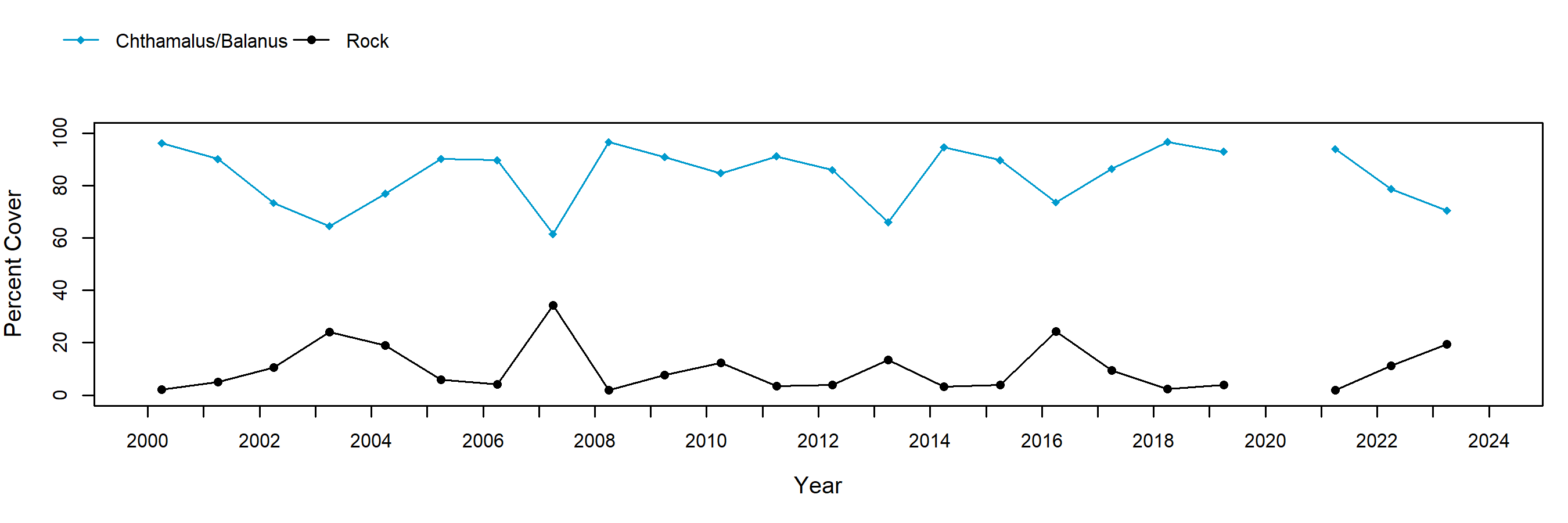
Chthamalus/Balanus (Acorn Barnacles) – motile invertebrate counts
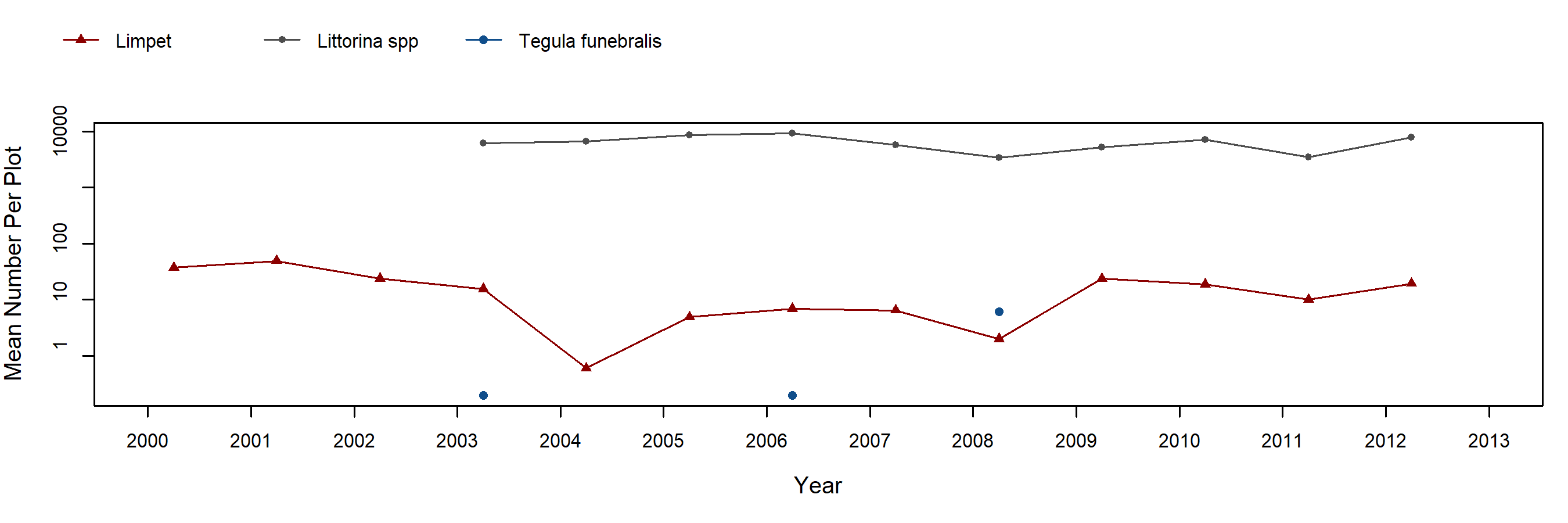
Mytilus (California Mussel) – percent cover
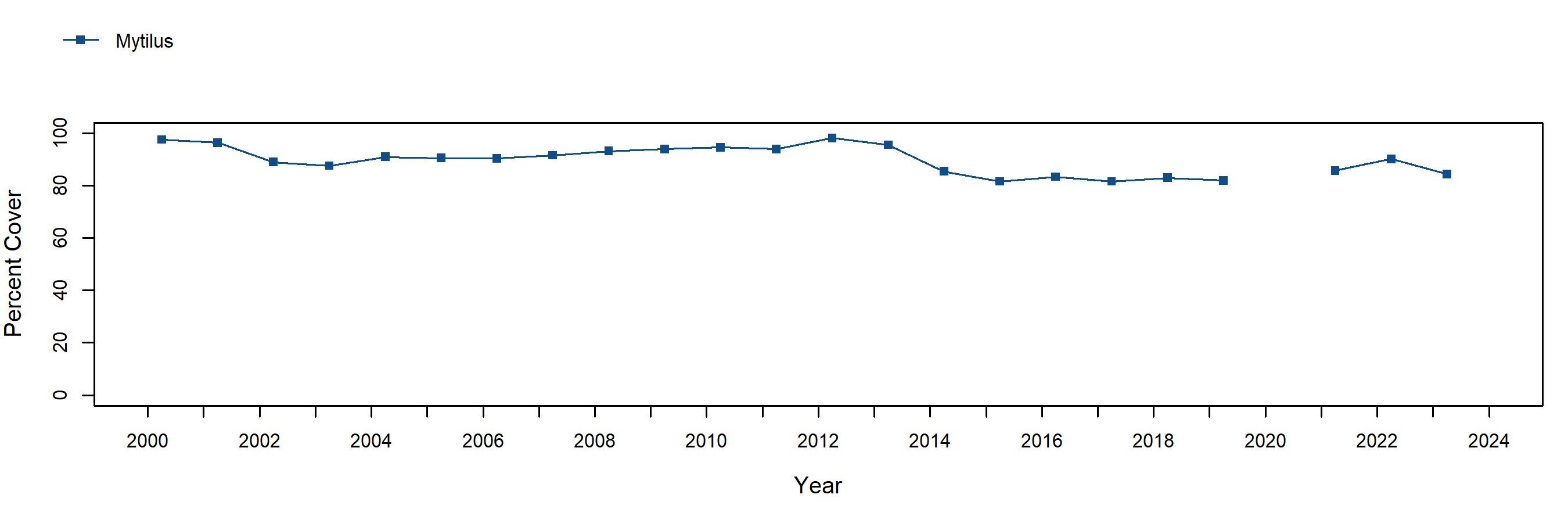
Mytilus (California Mussel) – motile invertebrate counts
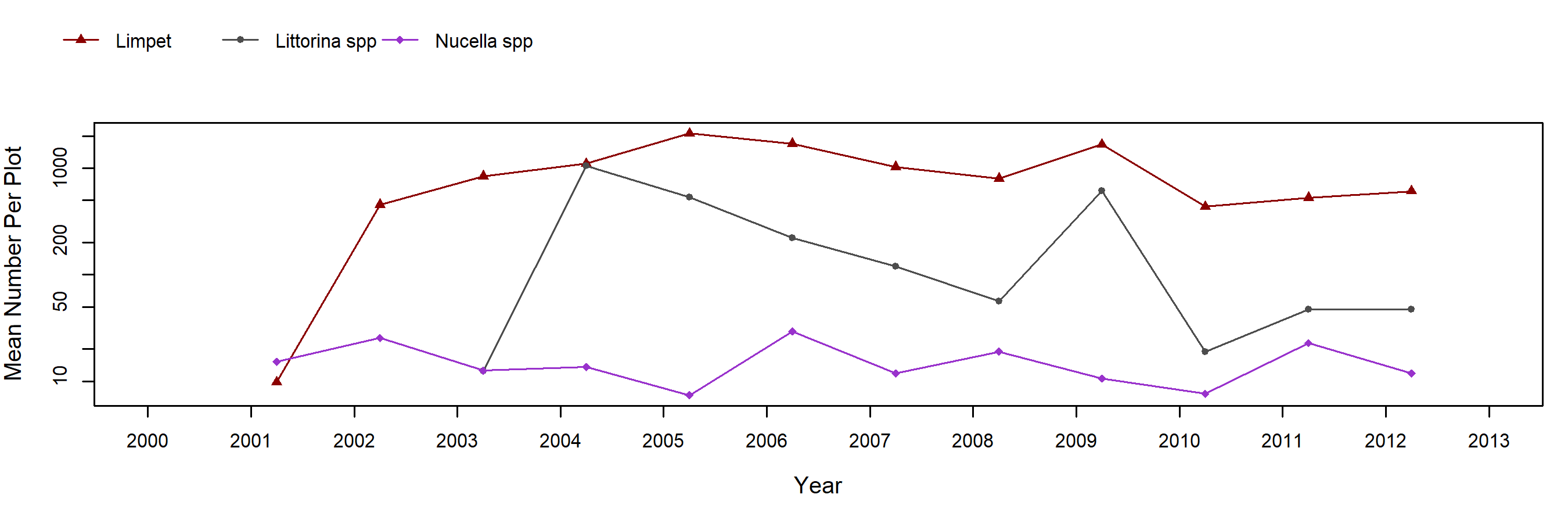
Fucus (Northern Rockweed) – percent cover
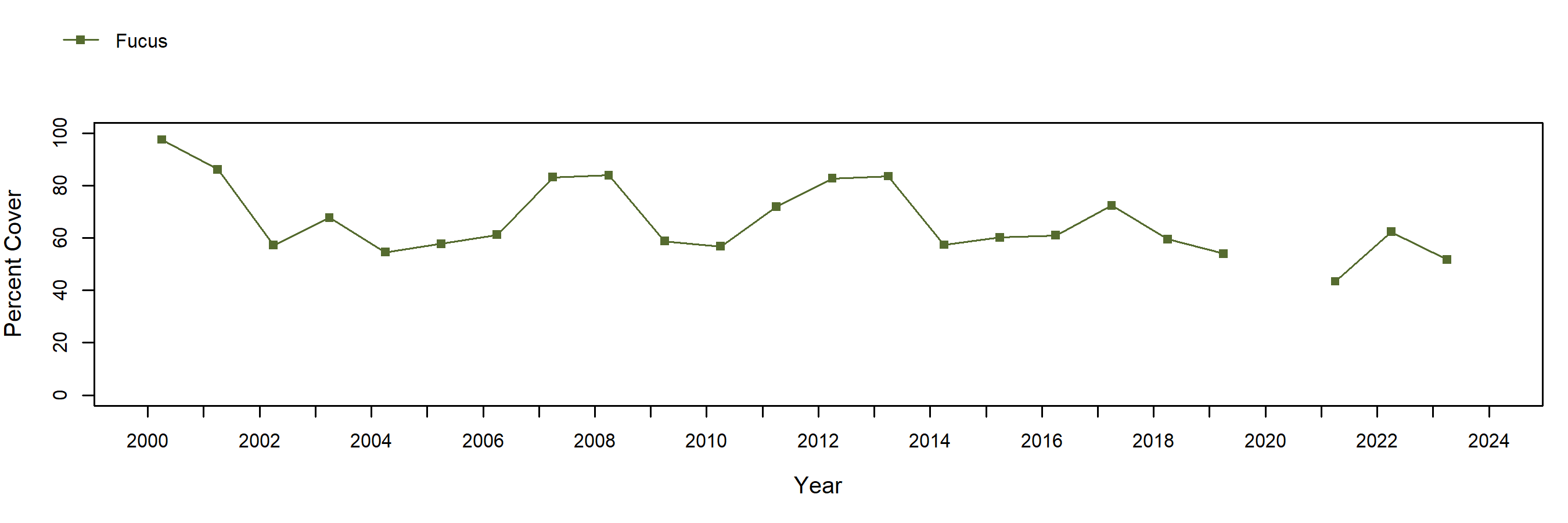
Fucus (Northern Rockweed) – motile invertebrate counts
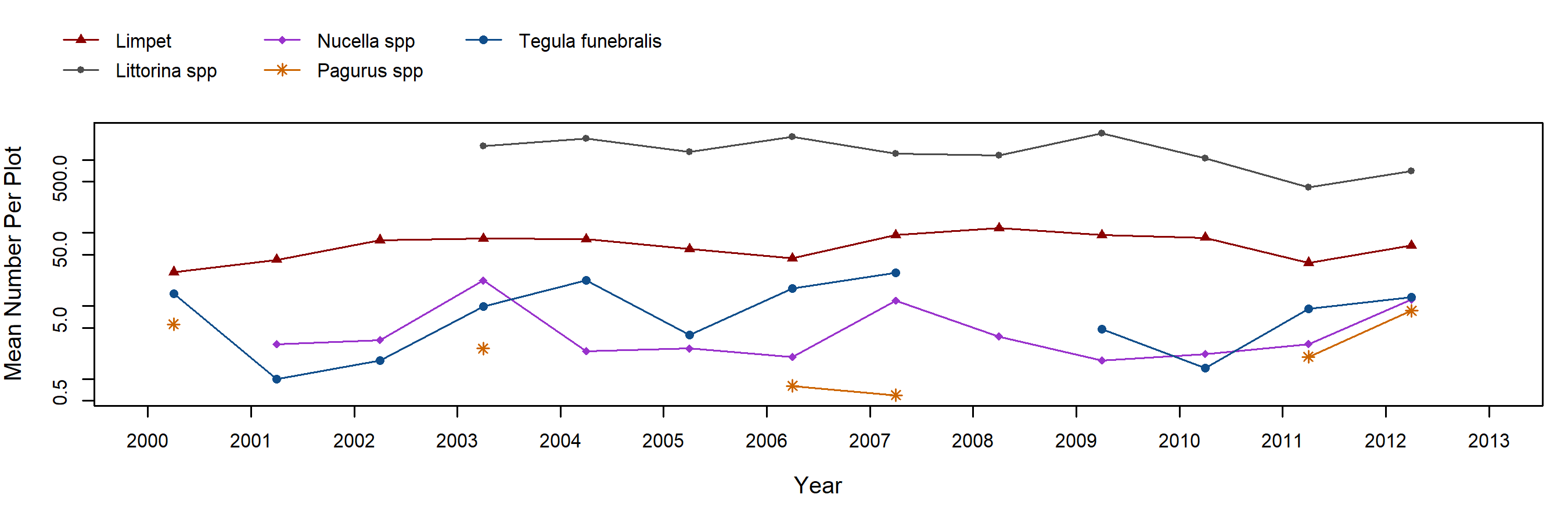
Pelvetiopsis (Dwarf Rockweed) – percent cover
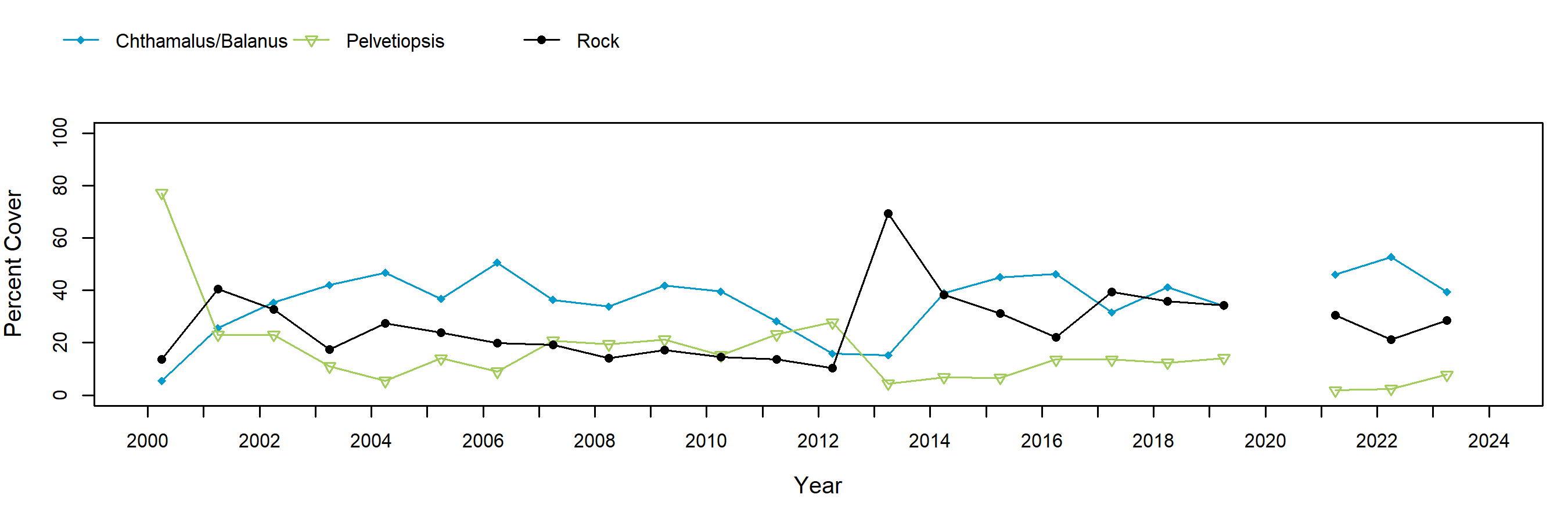
Pelvetiopsis (Dwarf Rockweed) – motile invertebrate counts
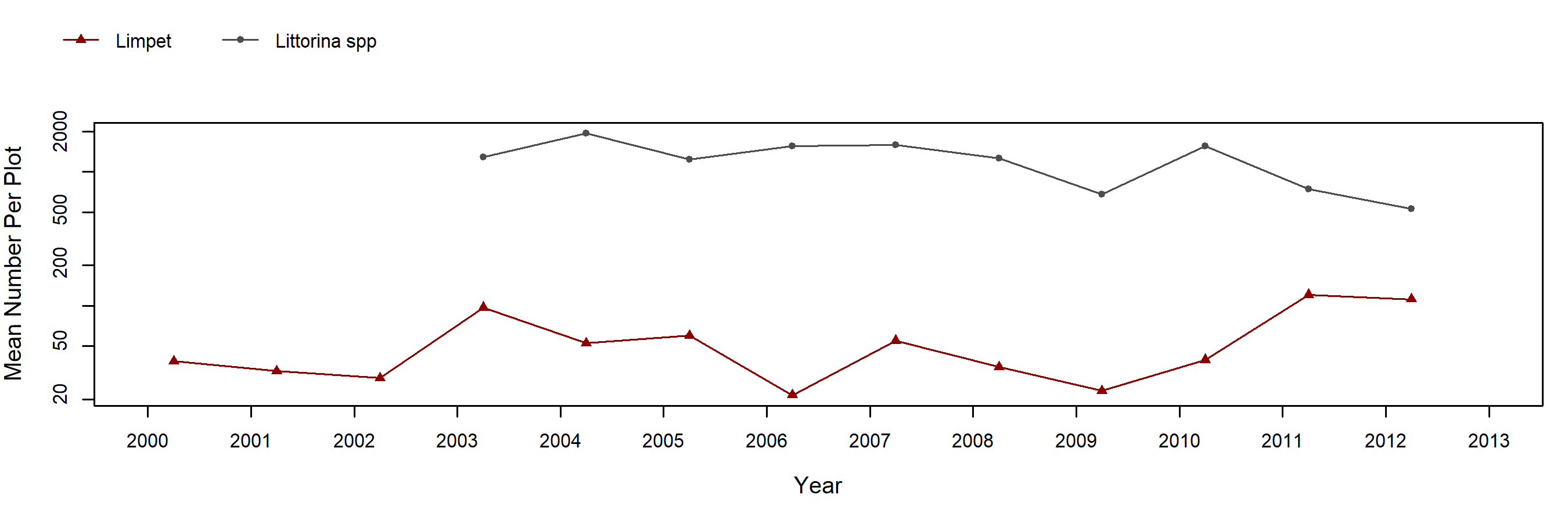
Neorhodomela (Black Pine) – percent cover
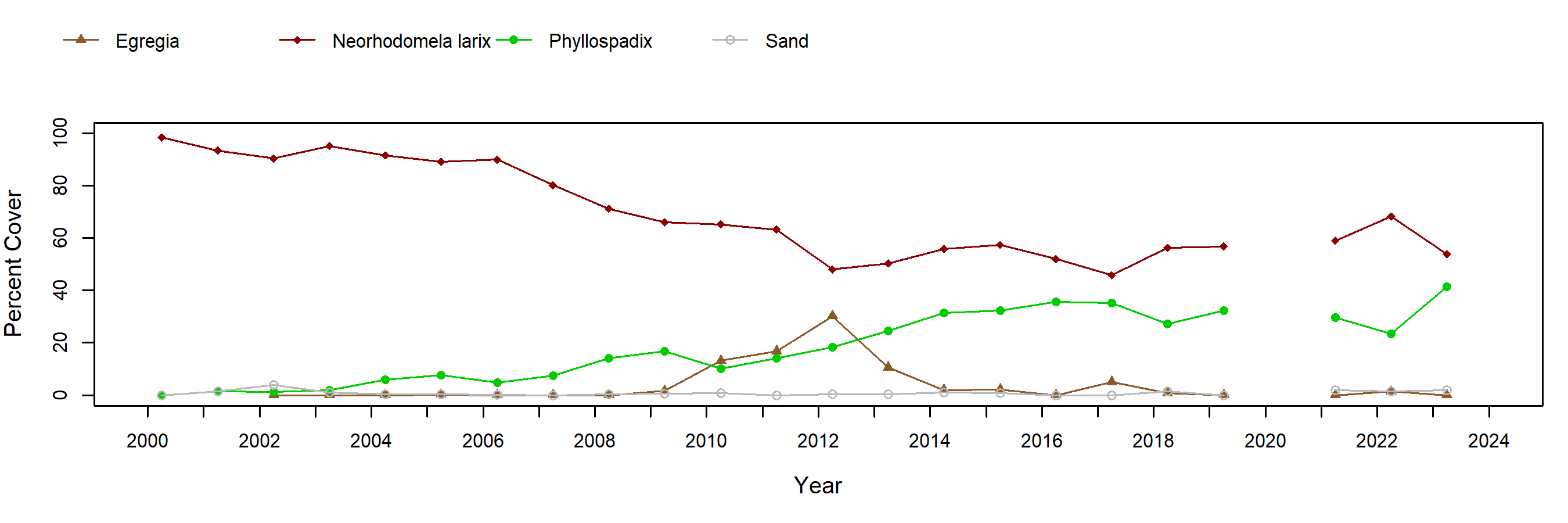
Neorhodomela (Black Pine) – motile invertebrate counts
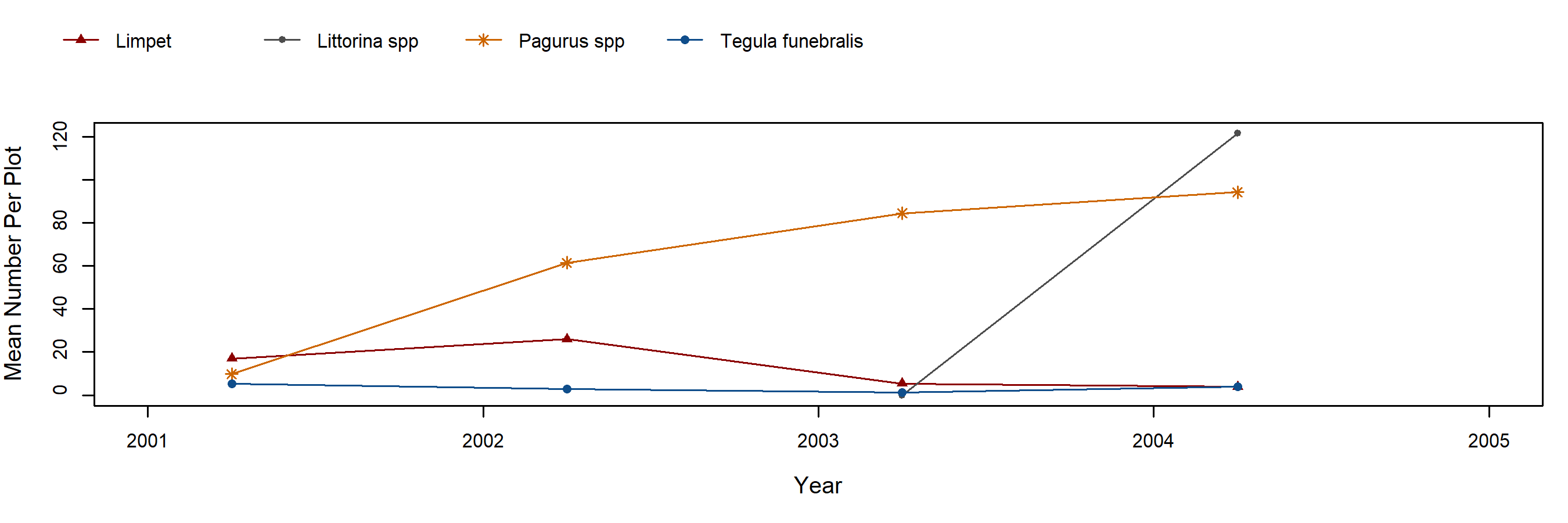
Transects

Below are the trends observed for each Transect target species at this site. Long-Term trend graphs also include any species that reached a minimum of 25% cover during any single point in time within a given target species assemblage. Breaks in trend lines represent missed sampling events.
Phyllospadix (Surfgrass)
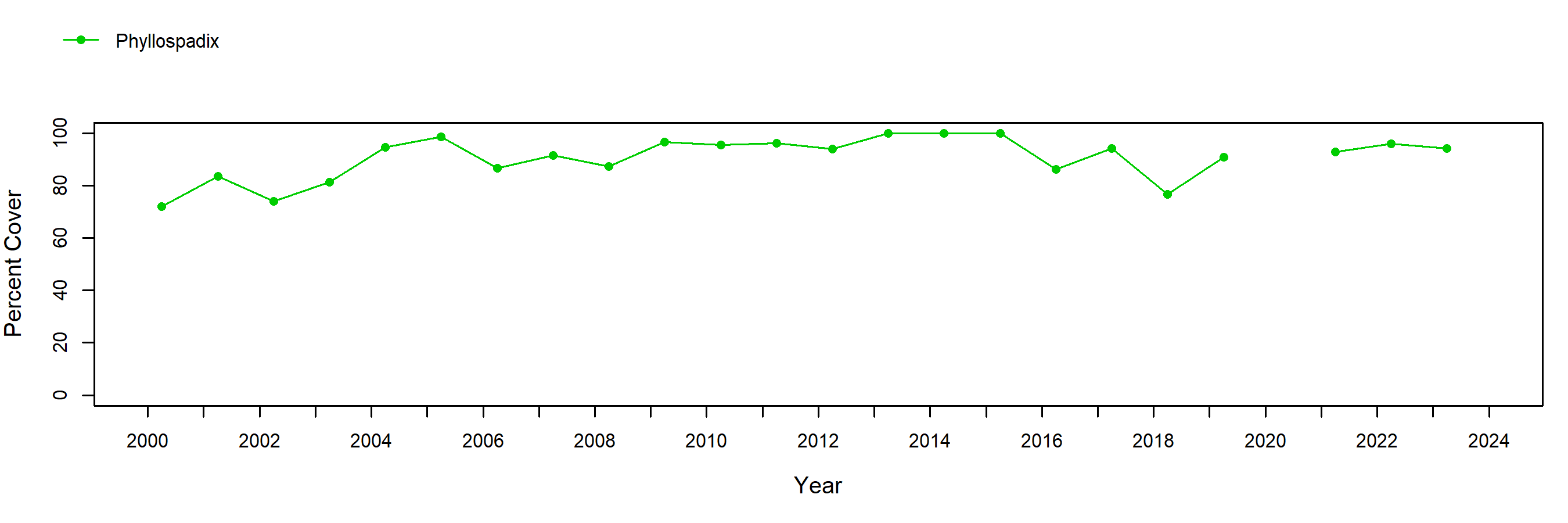
Species Counts and Sizes

Species Counts and Sizes (where recorded) for Pisaster are shown below for this site. At some sites, other sea star species and Katharina are counted in addition to Pisaster. The sum of all individuals across all plots is displayed. Note that data gaps are represented by breaks in long-term count trend lines, but are not shown in size plots.
Pisaster ochraceus (Ochre Star) – counts
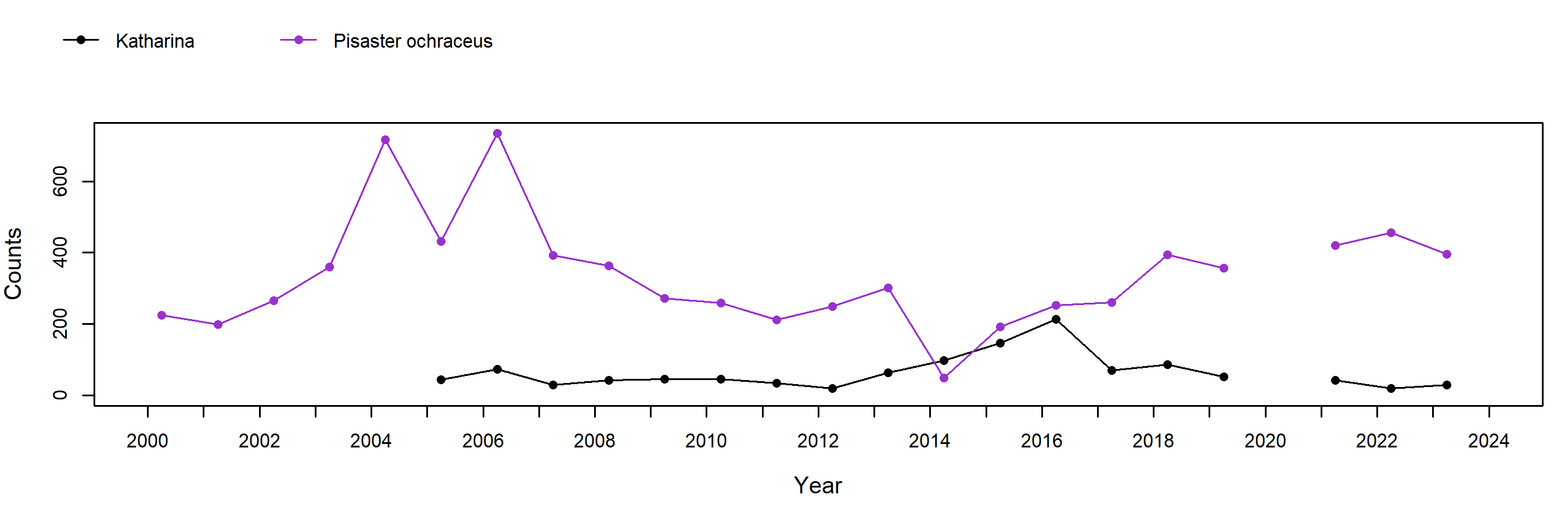
Pisaster ochraceus (Ochre Star) – sizes
